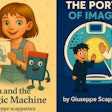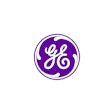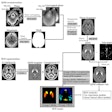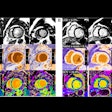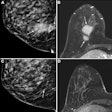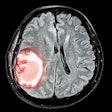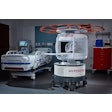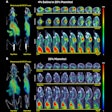SAN FRANCISCO - In experienced hands, breast MRI with mammography or ultrasound can help avoid biopsies of suspicious lesions that would otherwise turn out to be false positives, according to a poster presentation on September 7 at the American Society of Clinical Oncology (ASCO) 2013 Breast Cancer Symposium (BCS).
Current clinical practice guidelines from the American College of Radiology (ACR) discourage the use of MRI for working up suspicious findings in mammography and ultrasound, said Dr. Kevin Strobel from the University of Aachen in Germany. However, MRI improves the positive predictive value of the two technologies, and careful use of the modality could help women avoid unnecessary biopsies.
"Patients don't like to be biopsied, and MRI could help us avoid unnecessary procedures," Strobel told AuntMinnie.com.
For their study, Strobel and colleagues evaluated 2,754 patients who underwent dynamic contrast-enhanced breast MRI between June 2010 and April 2012. Of these, 277 had MRI for further workup of suspicious findings identified with mammography or ultrasound.
All lesions categorized as MRI BI-RADS 4 and 5 underwent biopsy, while lesions categorized as MRI BI-RADS 1 or 2 did not proceed to biopsy, except for women with mammographic calcifications suggesting ductal carcinoma in situ (DCIS). Lesions categorized as MRI BI-RADS 3 had additional short-term follow-up by MRI, ultrasound, and/or mammography. Women who did not undergo biopsy were followed for 12 to 24 months, Strobel said.
For suspicious lesions at mammography, MRI increased positive predictive value as follows:
- Masses: 19.3% for mammography alone to 92.3%
- Asymmetries: 3% for mammography alone to 33.3%
- Architectural distortions: 8.3% for mammography alone to 25%
- Calcifications: 21.1% for mammography alone to 62.5%
For suspicious lesions at ultrasound, MRI increased positive predictive value from 13.5% for ultrasound alone to 71.4% for ultrasound plus MRI for masses, and from 3.3% to 50% for nonmass findings. In four of the 277 patients, MRI showed additional suspicious findings, requiring MR-guided biopsy; one was proved malignant by histology.
Thus far, no patient who avoided biopsy has been diagnosed with invasive cancer or DCIS, according to Strobel.
Even if breast MRI is effective for conclusively working up suspicious findings in mammography and ultrasound, should it be used? Perhaps with a simplified imaging protocol that could reduce time and cost, Strobel said, referring to research presented at the conference by colleague Dr. Christiane Kuhl in which breast MRI acquisition and reading time was cut from 21 minutes to three minutes.
"There's no denying that breast MRI costs more than biopsies," he told AuntMinnie.com. "But we wanted to demonstrate that the modality is viable for this purpose. Perhaps if shorter imaging protocols are developed, using MRI to work up suspicious findings would be less time-consuming and less costly."




.fFmgij6Hin.png?auto=compress%2Cformat&fit=crop&h=100&q=70&w=100)



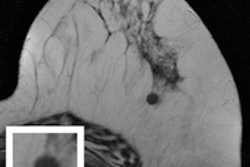
.fFmgij6Hin.png?auto=compress%2Cformat&fit=crop&h=167&q=70&w=250)



